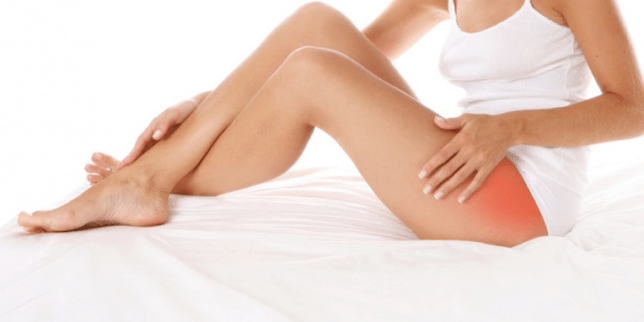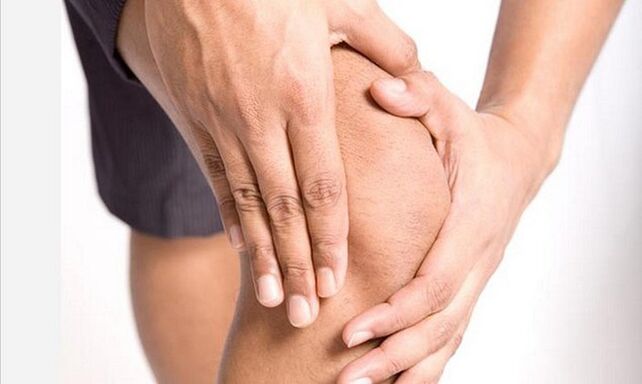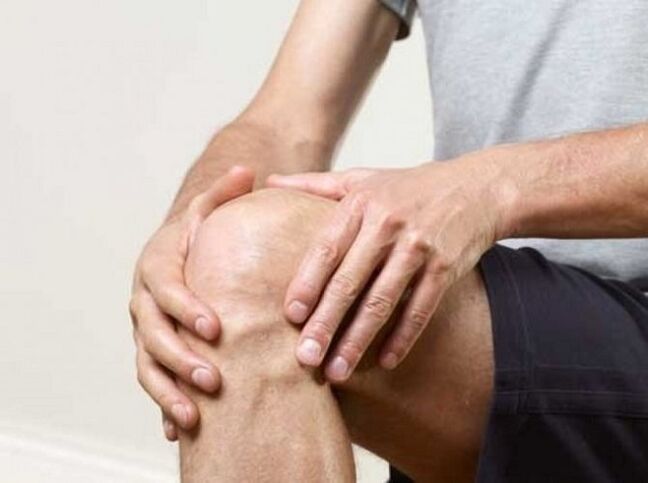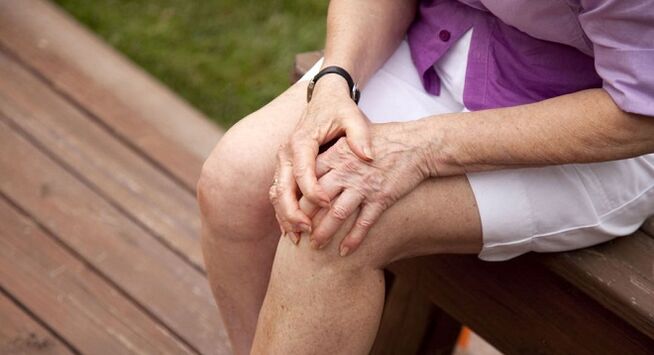
All joints in the human body have two enemies that prevent them from working at full capacity. These are dry joints and arthritis, however, although they have the same names, these are two different pathological processes that affect the cartilage tissue of the joint. Below we will look at how arthritis differs from arthritis.
As you know, cartilage ensures proper functioning of joints. Cartilage is firm and stiff due to lack of blood vessels and nerve endings. Thanks to this, stress on tissues, where capillaries or nerve fibers are located, are minimized.
When a person is active, cartilage tissue promotes an unobstructed, painless rotation of the bone head in the joint cavity, thus preventing frictional damage to the joint. During running, walking, soft cartilage is loaded, performing the function of shock absorption.
Osteoarthritis and arthritis lead to stiffness, making the patient unable to lead a normal life due to limited mobility. There are some symptoms of which the two are similar, but there are many others that are fundamentally different.
Physiological processes due to arthritis
The first symptom of the disease is pain in the joints. With arthritis, the inflammatory process of cartilage tissue begins.
In the joints, arthritis affects:
- cystic joints;
- synovial fluid, which lubricates and nourishes the tissues and joint cavities;
- located along the edges of the synovial membrane.
Patients diagnosed with arthritis often complain of pain and stiffness in their joints. The inflamed area begins to turn red and the temperature rises even at the site of arthritis or polyarthritis. In some cases, pain syndrome is also felt in the joined joint on the other arm or leg.

One symptom that worries patients with arthritis and polyarthritis is swelling of the outer tissues of the joint.
However, despite the fact that the functions are reduced, deformation of the structure does not occur. Arthritis causes the appearance of an inflammatory process of cartilage tissue, caused by trauma, infection or metabolic disorder. This disease is completely curable, but provided that the patient complies with the doctor's recommendations during treatment and does not use folk remedies for unproven arthritis. If this process goes in the natural direction, the disease will lead to osteoarthritis.
Physiological processes caused by dry joints
The presence of osteoarthritis or degenerative spondylolisthesis leads to pathological processes occurring in the joint cavity. Since there are no vessels in cartilage tissue, it eats synovial fluid, which contains many elements.
As a person ages, the metabolism in the body begins to slow down, leading to a decrease in the nutrition of the cartilage, leading to a loss of quality.
The cartilage with many types of arthritis becomes thinner and cannot cope with the shock absorption functions. For this reason, the patient begins to feel pain syndrome as soon as the joint is involved.
In this case, it makes no sense to take anti-inflammatory drugs for the joints because there is no inflammatory process. This disease occurs in older people. Its appearance is influenced by one's lifestyle. People who eat properly, have healthy lifestyles, as a rule, will not show up.
Also, another factor that makes arthritis different from arthritis is that, unlike the first, with the second, there is no swelling of the tissues.

Also, arthritis differs in that it affects a specific joint. If it affects the joint on one arm, then it won't affect the other joint. It usually occurs in large joints like the hips or knees.
Different and similar characteristics of the disease
Similar symptoms:
- in the morning, a person feels numb and stiff;
- complete loss of limb movement;
- pain when movement of the affected joint.
These are inherent symptoms of the two diseases, but pain of different nature, where the sensation occurs, the time at which the sensation occurs. As a rule, a doctor relies on these indications when making a diagnosis.
The Difference Between Dry Arthritis And Arthritis
- When there is arthritis at the site of the affected joint, an increase in skin temperature is observed, this process is caused by inflammation. But with joint disease, despite the fact that the degenerative process is taking place, this symptom is not present.
- Arthritis leads to swelling of the upper tissues, with the latter not having symptoms.
- The presence of polyarthritis, inflammatory arthritis can lead to nodules under the skin. Such symptoms are not inherent to joint disease.
- Arthritis causes a deformed process in the joint and if left untreated (using ointments for joints or other methods), it becomes inactive. The presence of polyarthritis or arthritis does not lead to deformity.
- Due to inflammation in arthritis, the skin in the damaged area becomes redder. The second disease does not change the color of the skin.
Their similarities and differences
There are several shades that can be diagnosed when studied. Here, symptoms with individual and similar symptoms are described.
Painful feeling
As noted above, pain syndrome occurs in both diseases. However, arthritis must be characterized by the presence of inflammation that leads to pain. The nature of the pain is acute and can appear even at night or immediately after waking up.
Many people exacerbate the condition themselves when they use a new miracle cream or an online-advertised remedy for polyarthritis. Any good doctor will tell you that you cannot independently prescribe arthritis treatment.
For joint disease, pain occurs due to degradation of cartilage tissue, so it is unable to reduce the load. When not depreciated, the skeleton is injured.
A person feels pain after long walks or when doing exercises that put pressure on the joints. At first, the patient may feel mild discomfort, but as the disease progresses, the condition only worsens. In this case, not only do you need to take pills or other joint medicines, the treatment must be complicated and carried out under the supervision of a doctor.
Deformation process
Both diseases can change the structure of the joint. Arthritis can be identified by visual external physiological changes: increased local temperature, redness, swelling, and formation of nodes.
Often, accompanied by arthritis: weakness, increased sweating, psoriasis. Only certain types of arthritis can lead to changes in the structure of the joint - osteoarthritis and traumatic arthritis.
Arthritis is considered a more dangerous disease, as it does not manifest in the outside world. However, active tissue deformation occurs in the joint cavity. The cartilage becomes thinner and as a result bone tissue is exposed to abnormal stress.
Inflammation
With arthritis, swelling appears in the affected joint area. The reason is that the synovial membrane is inflamed, located in the middle of the capsule. When examining the patient's analysis, a degree of leukocytosis was found. As a rule, the presence of infection or trauma leads to the appearance of the inflammatory process.
Arthritis does not lead to leukocytosis, as there is no inflammation. The degenerative process begins gradually, and usually a person doesn't even notice any symptoms.
Click and crack
One symptom of joint disease is a clumping sound in a sore joint. The reason is that cartilage tissue is eroded, causing pain during the interaction of bone tissue. But scratching does not indicate illness, healthy people can also hear a click. With arthrosis, sound is rough and dry.
With arthritis, there is no scratching, as a result of the inflammatory process, the joint is swollen and unable to move completely, the cartilage tissue performs its functions.

Motor joint
Both diseases have a common symptom that they limit the mobility of the joint. However, the reasons for hardness are different.
The decrease in motor activity of dry joints is due to the thinning of cartilage tissue. In arthritis, stiffness caused by inflammation and spread. Completely paralyzed joints.
General and specific causes of occurrence
A common cause of the disease is an injury that a person has received while running or jumping. Also, the heavy and frequent load of the joint can lead to this. For this reason, the disease is most commonly found among professional athletes. Another cause is severe or frequent hypothermia, which usually occurs in the joints of the limbs.
Arthritis occurs as a result of inflammation caused by infection in the body; This is not typical of arthritis. Since inflammation is a whole body process, arthritis is only one consequence. In order to cure the disease, it is necessary to find out the cause of the inflammatory process and eliminate it. Additionally, excess weight can lead to the appearance of arthritis due to the fact that it puts stress on the joints. In this case, the joints of the lower extremities and the musculoskeletal system are at risk of being affected.
Osteoarthritis is a separate disease, since the process has nothing to do with the general condition of the body. The reasons for its appearance are that it contains a small amount of substance that enters the body due to inadequate nutrition. In addition, bad habits, such as smoking and alcohol abuse, can cause illness. Often its occurrence is prompted by diseases of the circulatory tract and hormonal disorders. According to statistics, mainly the elderly suffer from arthritis.

Who is at risk
A person of any age is prone to arthritis. Diseases caused by infections affect even babies. According to statistics, women are prone to arthritis.
As for joint disease, the elderly often suffer. As a rule, deformation of the cartilage tissue structure begins in people over 60 years of age. The fact that as a person gets older, the body's metabolism slows down, which is also influenced by the person's lifestyle. And by the way, people with arthritis are more prone to developing joints.
The risk group includes people with bad habits, frequent physical contact and poor diet.
Popular in the treatment of arthritis and dry joints
For the treatment of these diseases, a part of the same measures are performed:
- the patient must eliminate any stress, establish a regime of savings;
- taking drugs to restore the volume of cartilage and nourish it;
- perform therapeutic exercises in combination with massage to improve metabolism in the body and blood flow to the diseased joint;
- the use of pain relievers for pain relief;
- the doctor prescribes an intra-joint blockade drug in the form of an injection;
- joint oxidation;
- The patient switches to a complex diet.
In particular, treatment differs in the course of taking antibiotics for arthritis type of infection to treat the underlying cause of the disease.
When the disease has turned severe, they have to intervene with surgery to treat. This need arises when the cartilage tissue is completely destroyed. In this case, a prosthetic joint is installed.

























